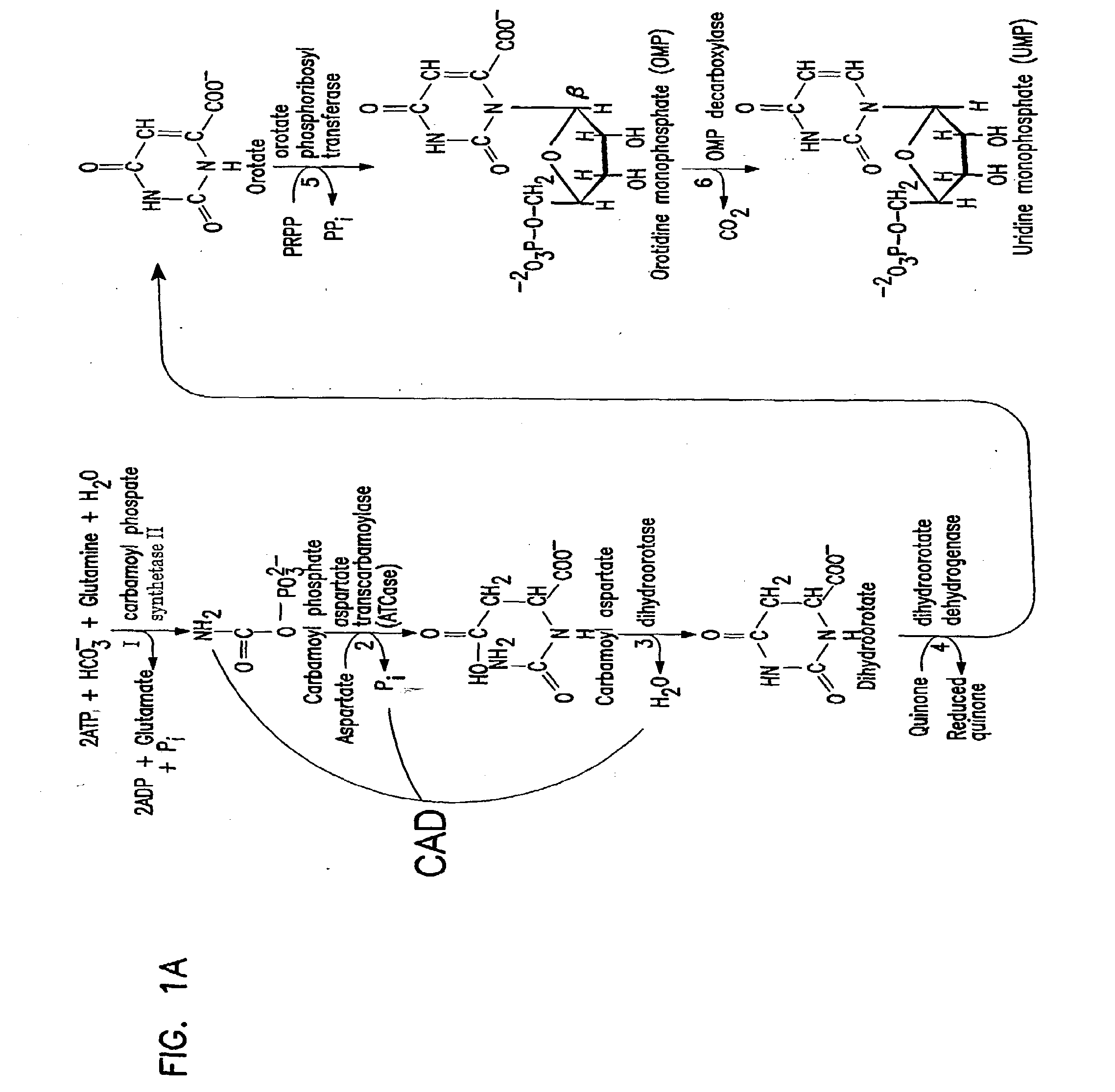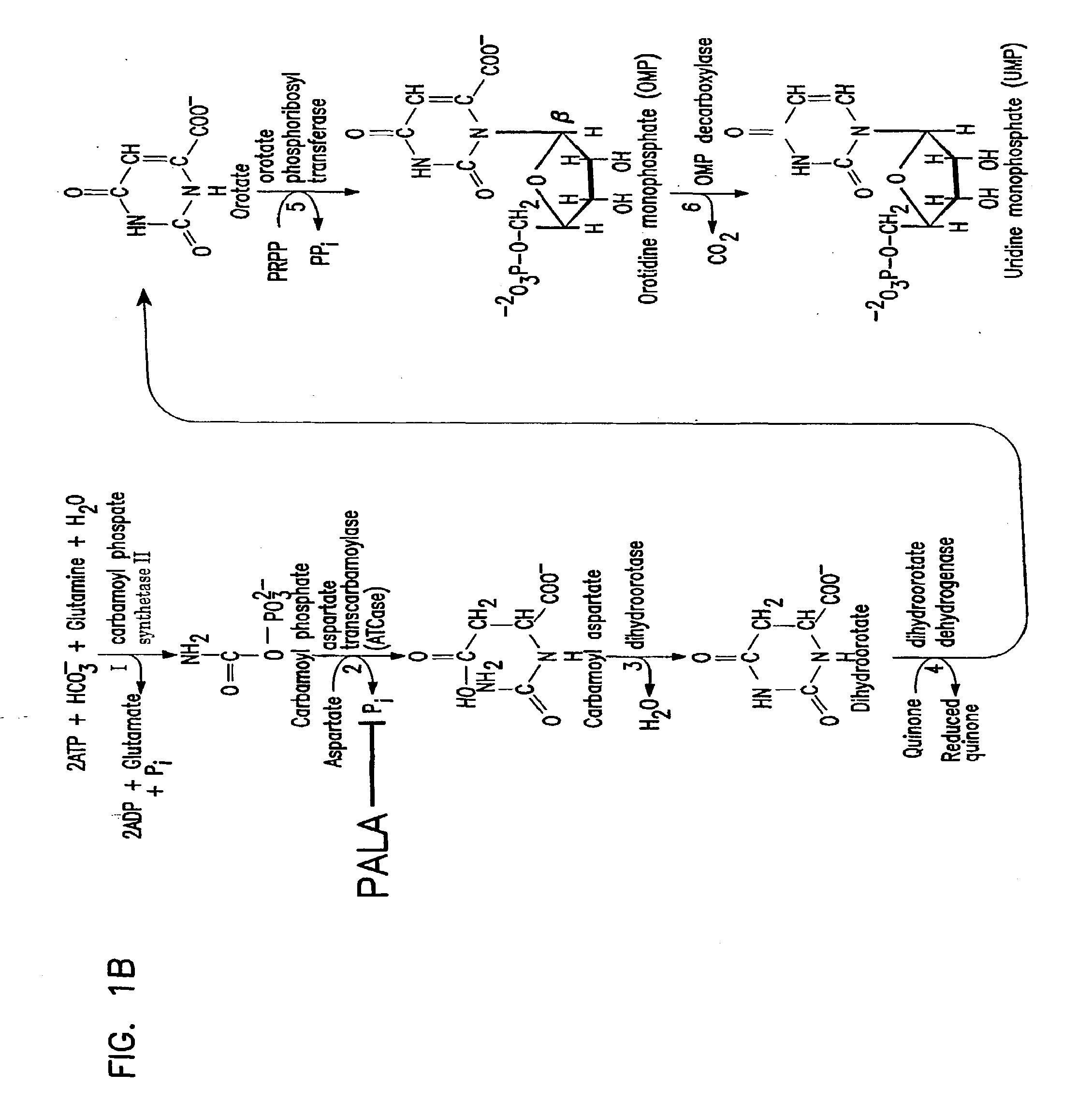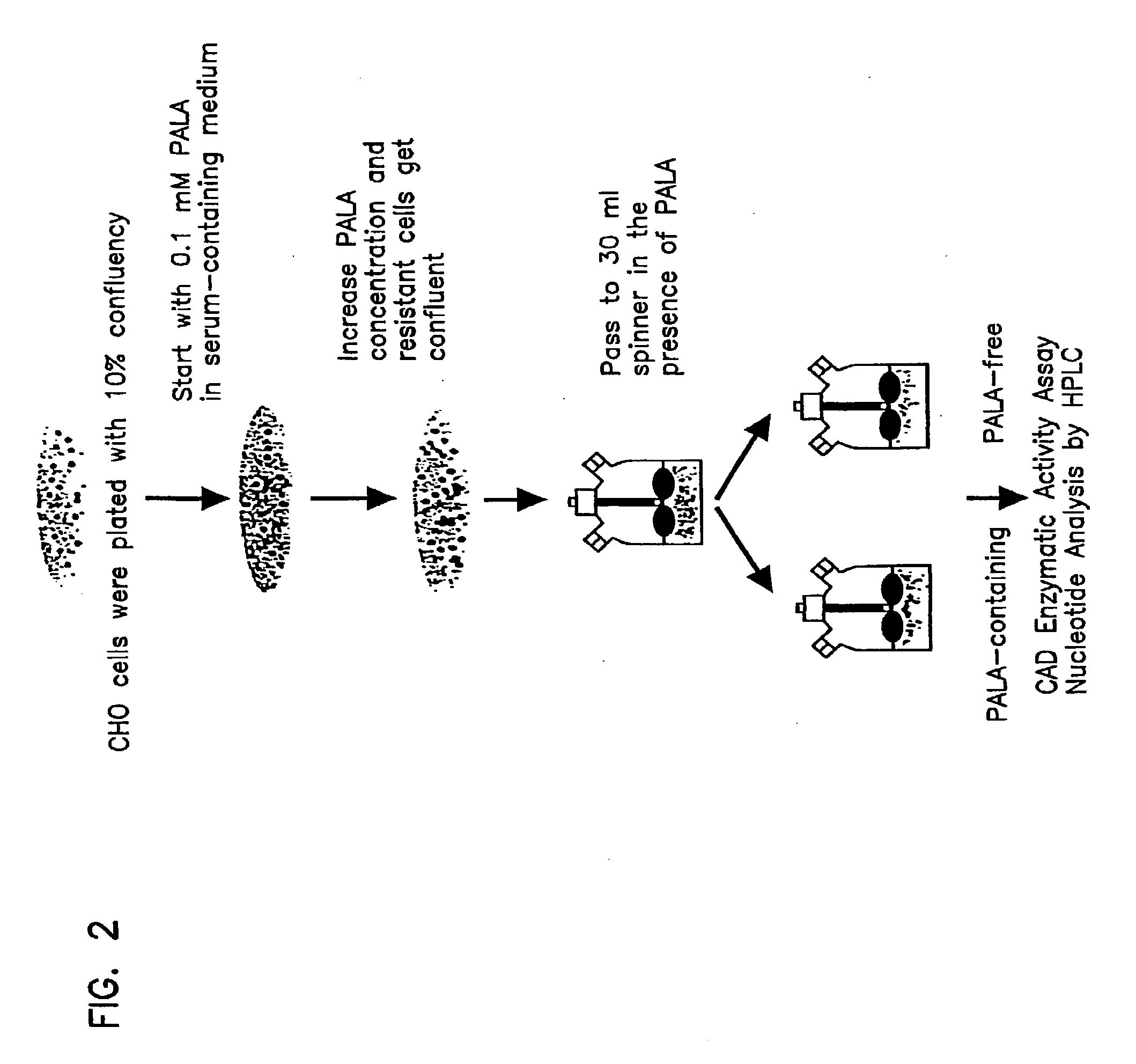Galactosylation of Recombinant Glycoproteins
a glycoprotein and recombinant technology, applied in the field of glycosylation of recombinant glycoproteins, can solve the problems of unfavorable effects of heterogeneous oligosaccharide structure, unfavorable oligosaccharide degradation, and cost prohibitive, and achieve enhanced intracellular cad activity, enhanced intracellular concentration of utp, and enhanced cad activity
- Summary
- Abstract
- Description
- Claims
- Application Information
AI Technical Summary
Benefits of technology
Problems solved by technology
Method used
Image
Examples
example 1
PALA Resistant CHO Cells Express Increased Carbamoylphosphate Synthetase II Activity
[0070] CHO DP12 and CHO DG44 parental cell lines and CHO DP12 expressing TNFR-IgG and anti-CD11a were cultivated with and without P-phosphonacytyl-L-aspartate (PALA). As shown schematically in FIG. 2, each cell line was plated at 10% confluency in 10 cm petri dishes using standard tissue culture techniques. Cells were cultured in serum containing medium having 0.1 mM PALA. The culture medium was changed weekly. Surviving clones were pooled and sub-cultivated in increasing concentrations of PALA until the target PALA concentration was reached, i.e., 2-10 mM PALA. After selection for the PALA phenotype (see below), cells were either passed into a PALA containing medium or to a PALA free medium and further cultivated in suspension spinner flasks. Spinner flask cell populations were sub-cultivated every 4-7 days. Cells selected in the presence of PALA are referred to as PALA-resistant cells, cells culti...
example ii
PALA Resistant CHO Cells Having Increased CAD Expression
[0074] The PALA resistant cells obtained in Example 1 were used to determine if increased CPS II activity exhibited in PALA resistant cells was a result of increased CAD expression in those cells. CAD expression was measured on PALA resistant cells using a RNase protection assay similar to the method described in Mahler and McGuire. Mahler and McGuire (1990), J. Clin. Invest., 86: 1641-1648. In particular, TRY cells were selected under 2 mM PALA and CAD mRNA expression measured using a RNase protection assay.
[0075] The data are shown in FIG. 4, and demonstrate that increased CPS II activity in PALA resistant cells corresponds to increased CAD expression within those cells. More than a two fold increase in CAD mRNA is observed in PALA selected cells as compared to control cells.
example iii
Increased Intracellular UTP in Cells Having Increased CAD Activity
[0076] The PALA resistant cells of Example 1 were used to determine if PALA resistant cells showed increased expression of UTP.
[0077] CHO cells were treated in 5 mM PALA, cell extracts were prepared and nucleotides measured using a method similar to Ryll and Wagner. Ryll and Wagner (1991) J. Chromatography, 570:77-88. The experiment was performed over a time course of 10 to 90 days and data quantified and plotted as UTP content of PALA resistant cells relative to control cells.
[0078] As shown in FIG. 5, PALA resistant cells having increased CAD activity showed markedly increased UTP elution peaks as compared to the UTP elution peak for control cells. FIG. 6 shows increased UTP concentrations in the PALA resistant cells were stable over a period of at least 90 days. PALA resistant cells showed an approximate 200-350% increase in UTP content as compared to control cells during the entire period of the experiment.
[00...
PUM
| Property | Measurement | Unit |
|---|---|---|
| Electrical resistance | aaaaa | aaaaa |
Abstract
Description
Claims
Application Information
 Login to View More
Login to View More - R&D
- Intellectual Property
- Life Sciences
- Materials
- Tech Scout
- Unparalleled Data Quality
- Higher Quality Content
- 60% Fewer Hallucinations
Browse by: Latest US Patents, China's latest patents, Technical Efficacy Thesaurus, Application Domain, Technology Topic, Popular Technical Reports.
© 2025 PatSnap. All rights reserved.Legal|Privacy policy|Modern Slavery Act Transparency Statement|Sitemap|About US| Contact US: help@patsnap.com



